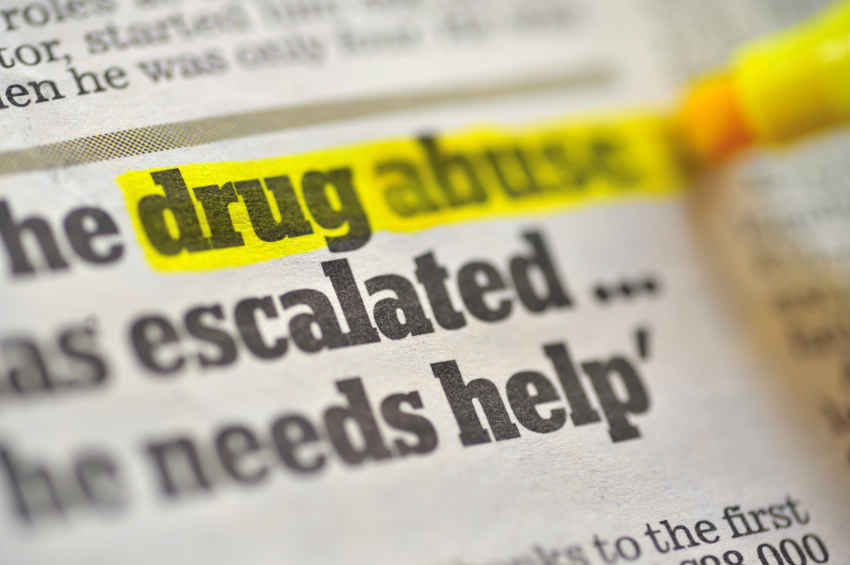
Drug addiction is a scourge – but we must rationally separate the disease from the person. For decades, this country has operated under the guise that addiction corrupts people and marks them as worthless to society due to their inability to provide economically. It gives up on many who become addicted, and in general, society looks towards people struggling with addiction as flawed or dangerous, or both. Despite advances in human rights, there is still a powerful stigma against not just addiction itself, but those whose mental health suffers under it.
Rectifying this is paramount to a society where addiction is less of a problem, and potentially eliminated. Often, addiction is identified as a chronic brain disease and can affect mental health. While food and sex addiction exist, it is very rare and separated from drug addiction through the distinction of addictiveness. Things like sugar, sex and gambling can turn into an emotional dependency, but physical dependency to drugs like alcohol and heroin is caused by how your brain interprets and reacts to these substances.
Understanding how the brain reacts to drugs – and understanding the mental health of people struggling with addiction – can help people distinguish the disease from the person, and set aside moralistic ideas for a better, more scientific approach.
Drugs And Your Mental Health
Drugs affect the your mental health because they bind to specific receptors in your brain’s cells. Basically, the structure of a cell is as such that it has certain ports for the entry and exit of different intracellular elements. In the brain, brain cells have ports that receive neurotransmitters. These neurotransmitters affect the way you feel and think and play a role in many other physical and autonomous functions.
What drugs do is they bind to the cells in the guise of natural neurotransmitters, thus making you feel a certain way.
Taking alcohol as an example, once alcohol enters the bloodstream, some of it passes through the blood-brain barrier – a special membrane to keep most foreign elements out of the brain – and it attaches itself to the neurons’ GABA, serotonin, NMDA (memory) and acetylcholine receptors. GABA is a neurotransmitter that affects the way you move – as an agonist, alcohol’s effects on the brain through the GABA receptor lead to slurred speech and trouble walking.
As it also binds to serotonin, on top of releasing your inhibitions and slowing you down, it also makes you feel good – being tipsy is the combination of alcohol’s effect on your chemical happiness, combined with the way it alters your brain’s ability to control movement.
A separate effect happens with each drug commonly used today. Opioids slow the body’s respiratory system and numb pain, while inducing euphoria. Stimulants like cocaine give you a massive jolt in both happiness and motivation, while taxing the heart muscle and reducing appetite.
These drugs are all highly addictive, and completely different from hallucinogens like LSD or magic mushrooms, but all impact your mental health in a negative way.
How Addiction Starts
Psychoactive drugs include anything that manipulates or changes the way you think drastically. Sugar isn’t psychoactive, even though the consumption of sugar naturally releases endorphins. Caffeine, however, is psychoactive, even though its effects while consumed as a beverage like coffee or tea are negligible and cannot be classified as clinically addictive.
LSD is also psychoactive, but not addictive – while it also binds to the serotonin receptors in the brain, LSD has not reportedly been the cause of any overdose or addiction, and its main attraction is its ability to induce vivid visual hallucination.
What sets drugs like alcohol and heroin aside from the rest is the sheer overwhelming power with which it attacks your brain. Caffeine can make you feel a bit more productive and increase anxiety slightly at high dosages, but alcohol will change the way your brain functions and alter your brain’s structure through repeated excessive use. The same goes for heroin, cocaine, nicotine, and other addictive drugs. Their effects cause the brain much stress, and as a coping mechanism, it tries hard to develop a tolerance against said mental health effects.
This tolerance backfires, however, as it also deadens your brain towards many other sensations. In short, as an addiction progresses, it becomes the only thing in life that still satisfies you, and this produces an emotional and psychological obsession that affects your mental health. Addiction is born.
Why Addiction Is Hard To Beat
Addiction is a matter of both emotional and physical dependence. As an addiction progresses, the brain and the body have a harder and harder time to let go of the drug and live without it. Attempting to do so without waning off first might lead to symptoms of withdrawal, which range from flu-like with drugs like heroin, to possibly fatal for drugs like alcohol.
Emotionally, addiction either causes or is caused by a need to escape from reality, making the prospect of completely committing to reality through sobriety both very daunting, and not very attractive.
Getting high keeps you happy and staves off the shakes and the pain. Going sober only makes your body crave the drug more, to the point where you feel like a thirsty man in a hot desert, with no sign of water or civilization in view anywhere, on any horizon.
The mental health and motivation necessary to overcome that feeling must be immense, which is where addiction treatment jumps in.
Getting The Help You Need
Addiction treatment has come a very long way from the days of old, and we’ve developed countless psychiatric and medical tools to help combat the effects of addiction, in some cases lessen the power a drug has over a person and utilize therapeutic tools – from alternative medicine to talk therapy – to develop a patient’s mindfulness and get them through the early days of recovery.
A unique mix of factors surrounds each case of addiction: causes, circumstances, possibilities, and more. Reputable professionals evaluate these factors and develop a treatment plan concurrent to each case, without opting for a cookie-cutter approach. To combat addiction effectively, the medical and mental health community recognizes that specificity matters.
All roads lead to Rome – choosing the one right for you may take time, but if you don’t stop moving forward, you will get to your destination. In the case of addiction, that destination is the point at which you’ve become completely comfortable with your sobriety, and no longer fear relapse. It can take months, years, or decades – but each step of the way is worth the effort it took to make that step.









